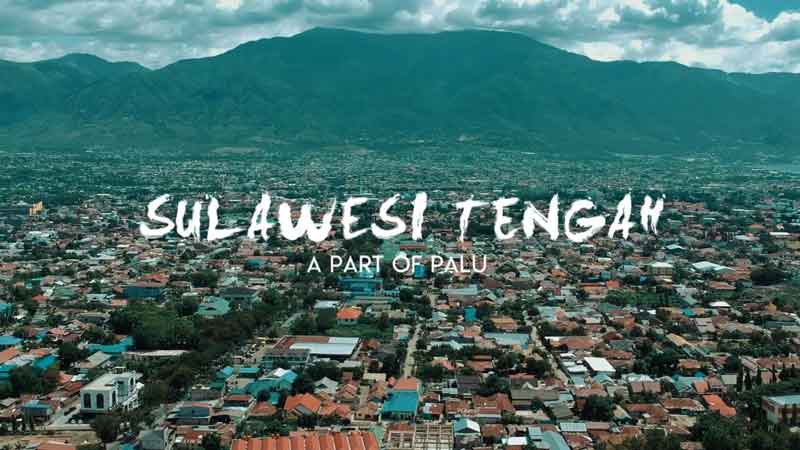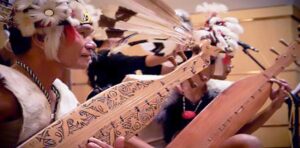
[ad_1]
As time went on, the existence of traditional Central Sulawesi musical instruments began to be threatened by the massive presence of contemporary musical instruments of several kinds. The modern musical instrument industry from several developed countries continues to exist and don’t know when it will end.
All parties should understand the importance of preserving the art of traditional musical instruments typical of Central Sulawesi. To arrive at this, we really need something called collective awareness, starting from citizen awareness and government awareness to support policy.
The synergy between residents and the government can make Palu’s traditional musical instruments sustainable for future generations.
And we all need to remember, it’s not only Central Sulawesi’s musical instruments that need to be preserved. All other Indonesian traditional musical instruments must also receive the same attention. The following are the traditional musical instruments of Central Sulawesi that need to be understood.
Various Traditional Musical Instruments of Central Sulawesi
1. Saint
The first traditional musical instrument of Central Sulawesi is Santu. Where this musical instrument is made of bamboo which you may be able to put in a tube zither type and includes a row of ideo-cordophones. The skin on the bamboo in the middle is perforated for the resonator and later when the sound is taken it can be a little stronger.
Usually, this Santu musical instrument is often played by residents in Central Sulawesi to fill their spare time in the fields. They play music while watching the clouds. Besides that, some young people sometimes when they are playing war games, this musical instrument is used as a means of communication for their ranks.
2. Taliindo

In this second point, which includes the traditional musical instruments of Central Sulawesi is Taliindo. This tool is made from 3 ingredients which are quite easy to get, namely:
- Wood
- Coconut shell
- strings
Played by picking, this musical instrument made of coconut shell acts as a temporary resonator of wood for the body and strings for the strings. At harvest festivals, this instrument was still played by some Sulawesi youths and youths at that time.
3. Double

Ganda is a traditional musical instrument of Central Sulawesi which is played by being beaten like a drum. This musical instrument has 2 pieces of skin on both sides, so almost anyone can easily learn this traditional musical instrument.
Another name for Ganda is Kanda, which has a smaller and slimmer shape than the Javanese drum. And as for the technique of hitting it, it depends on the will of the player and it depends on what kind of event it is used.
4. Geso-Geso

Geso-geso is a traditional musical instrument in Central Sulawesi. Initially, his real name was Pa’ Geso’ Geso, but people find it easier to call him Geso-Geso. It is played by swiping, even though this Geso-Geso instrument is enough to play with only one string
The material for making this traditional Geso-Geso musical instrument must have a strong and hard character and it is contained in a shell covered with animal skin which will later serve as a loudspeaker membrane. And the tool for swiping is made of wood fiber or you can also use palm fiber and then tied to a rattan.
5. Gimba

Now, this fifth musical instrument is the traditional Gimba musical instrument. Based on available sources, no one really knows for sure whether it is a Gimba because in other sub-districts in the Donggala district there are also those who call it ganda-ganda with a smaller form but residents only know that since it was there, the name of the musical instrument is Gimba.
Regarding Gimba’s role in socializing a job or when there are specific events, such as news of grief, natural disasters and others.
They can recognize that there is imminent danger by ringing this Gimba by being hit and each number of strokes indicates something different. Thus, it can also be said that the Gimba musical instrument is a traditional communication tool.
6. Tatali

Tatali is a musical instrument from the Central Sulawesi region whose news is almost the same as the flute. This instrument is played by being blown as a musical instrument typical of the To Wana tribe. Not everyone can easily play the Tatali instrument. This is because the size reaches 50 cm and a diameter of 2 cm.
In Tatali there are 3 holes that serve for air resolution where we place our fingers, of course there are only 3 sound choices and it depends on the skill of the player to play Tatali. In order to be pleasant to listen to, there is a special technique for blowing it, which means you have to use your feelings.
7. Yory

The traditional musical instrument of Central Sulawesi, which is called Yori. Made from natural materials, namely palm fronds and ropes made of bark. The role of the Yori traditional musical instrument is to entertain ourselves because the sound that is made is not loud, but at least the situation is not so quiet.
Yori’s work takes a moment, depending on the materials available. When the material is complete, the manufacturing process will be faster.
8. Lalove

Lalove is also a traditional musical instrument that is blown and comes from this province. The role of this musical instrument is to accompany dances from the Central Sulawesi region or specific traditions. It has a shape shaped like a long flute musical instrument.
When played, it is usually paired with other musical instruments such as Kadode, Yori, Mbasi-Mbasi or Kentongan.
For the local traditional ceremony, namely Balia, a healing event for residents of the Lalove musical instrument is still brought in by local residents.
Also Read: Traditional Musical Instruments of West Sulawesi
Closing
Such is the information regarding the traditional musical instruments of Central Sulawesi. Hopefully, what you read will be useful to increase your knowledge in the art of music. And don’t hesitate to give comments, criticisms or opinions for the development of this blog.

